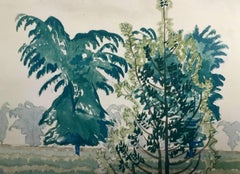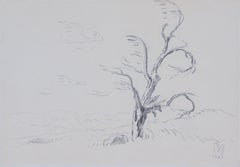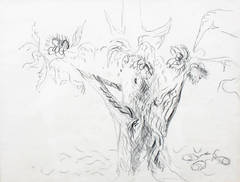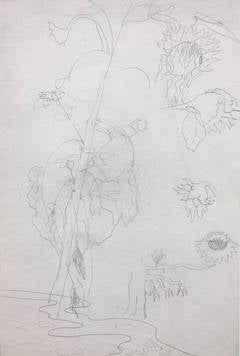Charles Burchfield Trees
1910s American Modern Landscape Drawings and Watercolors
Paper, Watercolor
1960s American Modern Landscape Drawings and Watercolors
Paper, Conté
Recent Sales
1960s American Modern Landscape Paintings
Graphite, Paper
1910s American Modern Landscape Drawings and Watercolors
Graphite, Paper
1910s American Modern Landscape Drawings and Watercolors
Graphite, Paper
1910s American Modern Landscape Drawings and Watercolors
Graphite, Paper
1910s American Modern Landscape Drawings and Watercolors
Graphite, Paper
20th Century Modern Landscape Drawings and Watercolors
Paper, Gouache
People Also Browsed
2010s Mexican Brutalist Decorative Art
Wood
1890s Impressionist Landscape Paintings
Canvas, Oil
1990s Austrian Mid-Century Modern Chandeliers and Pendants
Metal, Gold Plate
Vintage 1980s American Post-Modern Chairs
Wood
1910s Modern Landscape Drawings and Watercolors
Paper, Watercolor
Antique 1880s French Louis XVI Picture Frames
Bronze
Vintage 1980s American Mid-Century Modern Sofas
Upholstery, Wood
Vintage 1950s American Mid-Century Modern Dressers
Brass
Early 20th Century Swedish Art Nouveau Chandeliers and Pendants
Alabaster
Vintage 1970s Danish Post-Modern Lounge Chairs
Leather, Wood
20th Century Unknown Post-Modern Animal Sculptures
Paint, Paper
1920s Ashcan School Figurative Paintings
Oil, Wood Panel
Vintage 1950s American Mid-Century Modern Dressers
Brass
Early 2000s American Post-Modern Rocking Chairs
Bouclé, Upholstery
Early 20th Century Tonalist Landscape Paintings
Canvas, Oil
Vintage 1950s American Mid-Century Modern Dining Room Tables
Maple
Charles Burchfield Trees For Sale on 1stDibs
How Much are Charles Burchfield Trees?
Charles E. Burchfield for sale on 1stDibs
Born in Ashtabula Harbor, Ohio, Charles Burchfield became known as a town-landscape painter of middle-western America, and his paintings, drawings and prints have had much influence on succeeding generations of artists. He has also been described as a social critic, naturalist, and transcendental visionary whose sensitivities infuse his artwork. Of his impact on American art, Matthew Baigell wrote: "Few American artists have ever responded with such passion to the landscape or have made it such a compelling repository as well as mirror of their intimate feelings."
In addition to his painting, Burchfield was a teacher at the Art Institute of Buffalo from 1949 to 1952 and at the University of Buffalo from 1950 to 1952.
Burchfield's career can be divided into three phases. The first is landscapes based on childhood memories and fantasies and ended about 1918; the second, from 1918 to 1943, is Social Realism, including “grimy streets and rundown buildings of the eastern Ohio area,” and the third phase is a return to subject matter of his childhood and the “investing them with a kind of ecstatic poetry.” (Biagell 54)
Throughout Burchfield's career, watercolor was his preferred medium. Knowledge of Oriental art influenced him to use simple forms.
Burchfield spent his youth in Salem, Ohio, where he developed a keen interest in art and nature and was intensely aware of woodland sounds and noises. In 1912, he decided to become a painter and enrolled in the Cleveland School of Art, where his most influential teacher was Henry Keller. Another major Ohio influence on his painting was William Sommer, leader of the modernist movement in the Cleveland area. He introduced Burchfield to experimental watercolor techniques and color theory, and Burchfield began attending sessions of the Kokoon Club, organized by Sommer and William Zorach to promote avant-garde art. In 1917, he developed a shorthand of abstractions of various shapes and moods, and he also began painting small houses that appeared to be haunted.
Burchfield served in World War I from 1918 to 1919, and served as sergeant in the Camouflage Corps, camouflaging artillery pieces. In 1921, he moved to Buffalo, New York, where until 1929, he worked as a wallpaper designer for the M.H. Birge and Sons Wallpaper Company. From that time, living the remainder of his life in Buffalo, he devoted himself full time to fine-art painting that ranged from rather sentimental depictions to abstraction in the 1960s.
In the 1920s, Burchfield moved away from what he perceived as an overactive imagination and did studies of architecture of Midwestern streets. This subject matter of the realities of the man-made world was influenced by his reading of Winesburg, Ohio: A Group of Tales of Ohio Small-Town Life by Sherwood Anderson, and playing off those themes he reflected a debunking of the heartland sentimentality by so-called sophisticated, more worldly critics. Then in 1943, he returned to his earlier style which he explained was a "necessary diversion" from the aftermath of World War II.
Once more Burchfield began to explore the landscape of his youth, and, using a less realistic style, became almost mystical in his expressions of nature including seasonal changes, and forest sounds, which he depicted with quivering brushstrokes. "His last paintings are filled with chimerical creatures — butterflies and dragonflies from another world." (Baigell 55)
The largest single collection of Burchfield’s work is at the Burchfield-Penney Art Center in Buffalo, New York, and includes his watercolors, prints, oil paintings and preliminary sketches for both paintings and wallpaper designs. In 1997, a major retrospective of his work was held at the National Museum of American Art in Washington, D.C. and was organized by the Columbus Museum of Art.
Find original Charles Burchfield paintings and prints on 1stDibs.
(Biography provided by Gallery of the Masters)
A Close Look at Modern Art
The first decades of the 20th century were a period of artistic upheaval, with modern art movements including Cubism, Surrealism, Futurism and Dadaism questioning centuries of traditional views of what art should be. Using abstraction, experimental forms and interdisciplinary techniques, painters, sculptors, photographers, printmakers and performance artists all pushed the boundaries of creative expression.
Major exhibitions, like the 1913 Armory Show in New York City — also known as the “International Exhibition of Modern Art,” in which works like the radically angular Nude Descending a Staircase by Marcel Duchamp caused a sensation — challenged the perspective of viewers and critics and heralded the arrival of modern art in the United States. But the movement’s revolutionary spirit took shape in the 19th century.
The Industrial Revolution, which ushered in new technology and cultural conditions across the world, transformed art from something mostly commissioned by the wealthy or the church to work that responded to personal experiences. The Impressionist style emerged in 1860s France with artists like Claude Monet, Paul Cézanne and Edgar Degas quickly painting works that captured moments of light and urban life. Around the same time in England, the Pre-Raphaelites, like Edward Burne-Jones and Dante Gabriel Rossetti, borrowed from late medieval and early Renaissance art to imbue their art with symbolism and modern ideas of beauty.
Emerging from this disruption of the artistic status quo, modern art went further in rejecting conventions and embracing innovation. The bold legacy of leading modern artists Georges Braque, Pablo Picasso, Frida Kahlo, Salvador Dalí, Henri Matisse, Joan Miró, Marc Chagall, Piet Mondrian and many others continues to inform visual culture today.
Find a collection of modern paintings, sculptures, prints and other fine art on 1stDibs.
Finding the Right Landscape-drawings-watercolors for You
Landscape drawings and watercolors show the world through the lenses of different cultures and perspectives. They were also incredibly important for displaying natural scenes before the invention of photography.
There are many ways to effectively arrange art on your walls so that you’re maximizing your wall space. You can introduce peace and serenity within the confines of a living room or bedroom if landscape drawings and watercolors are part of the art that you choose to bring into a space.
Watercolor landscapes have a rich history dating back to ancient China, where they dominated painting genres by the late Tang dynasty. Ink-on-silk paintings in China featured mountains and large bodies of water as far back as the third century. The Netherlands was home to landscapes as a major theme in painting as early as the 1500s, and by the Renaissance, watercolors had made their way to the West and into European culture, becoming a staple of decorative art.
It wasn’t until the Industrial Revolution that watercolor paints became more widely available and embedded in fine arts. Despite their broad distribution today, some artists have chosen to revive the old craft of preparing their own watercolor pigments, paying homage to the medium’s roots.
The variety of brush combinations and painting methods makes watercolor landscapes some of the most stunning pieces in any collection. Find landscape drawings and watercolors on 1stDibs.



